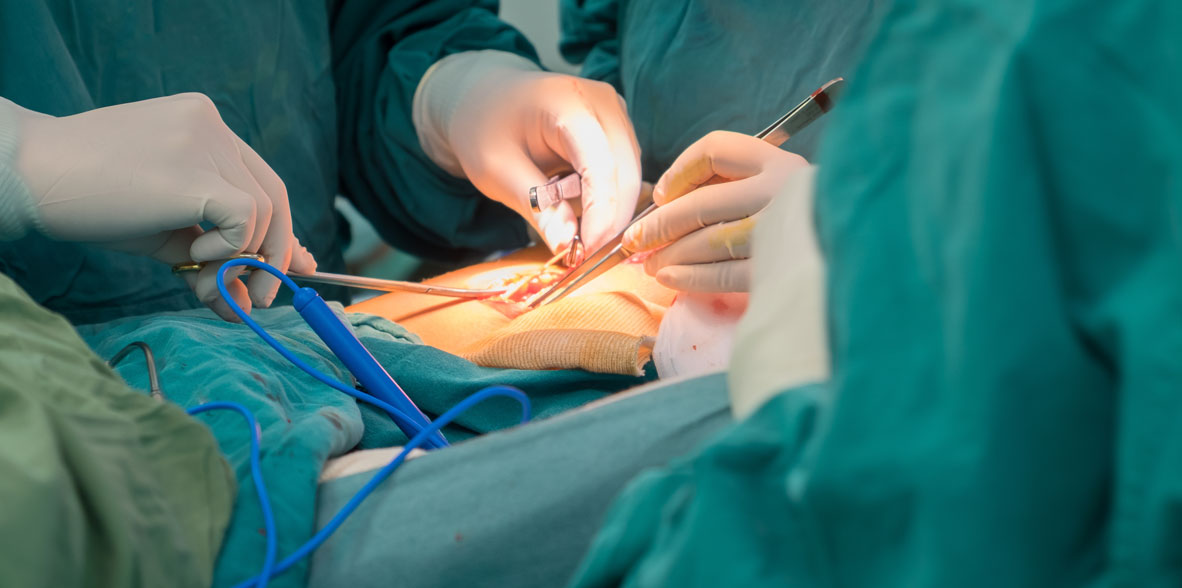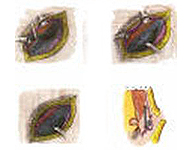Language selector
Language selector

Consultorio

Bardají Bofill ManelCirugía General Adultos
 The technique of hernioplasty without tension is based on the placement of a mesh as sufficient repair of the hernial defect, avoiding any other gesture not aimed at this purpose (the mesh is not used as a reinforcement of another previous suture).
The technique of hernioplasty without tension is based on the placement of a mesh as sufficient repair of the hernial defect, avoiding any other gesture not aimed at this purpose (the mesh is not used as a reinforcement of another previous suture).
2 types of techniques can be differentiated according to the type of prosthesis used:
Technique A
- Directions
- Direct or indirect primary inguinal hernias in adult men.
- Direct or indirect recurrent inguinal hernias with a defect greater than 3.5 cm in diameter.
- Technique
- Mesh
- The right size for the mesh should be 8 x 16 cm.
- The mesh should be sufficient to overlap about 2-3 cm above the Hesselbach triangle and about 1.5-2 cm above the pubic bone
- Fixation
- The lower edge of the mesh is fixed by a continuous suture to the inguinal or Poupart ligament to the plane of the deep inguinal orifice.
- The medial border is fixed with 2-3 loose stitches to the pubis partially covering it. Periodical stitches should be avoided.
- The mesh is incised on its outer edge to create two bands, the upper one of 2/3 and the lower one of 1/3. The two lower edges of both bands are joined by a single irresorbable point to the inguinal ligament.
- The upper edge of the mesh is attached by 4 loose stitches to the minor oblique muscle by resorbable suture.
- The rest of the lateral mesh to the crossing zone adapts about 2-3 cm below the aponeurosis of the greater oblique.
- Mesh
Technique B
- Directions
- Direct or indirect recurrent inguinal hernias with a defect less than 3.5 cm in diameter.
- Primary and recurrent crural hernias.
- Technique
- Mesh: A mesh strip of 2 x 10 cm is wound with a clamp forming a firm and solid plug.
- Fixation: Once the sac is found, only the adjacent tissues are dissected by about 3-5 mm to allow the plug to be fixed with loose stitches to the periphery of the defect.



































